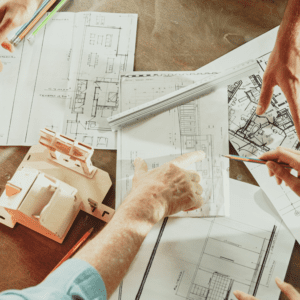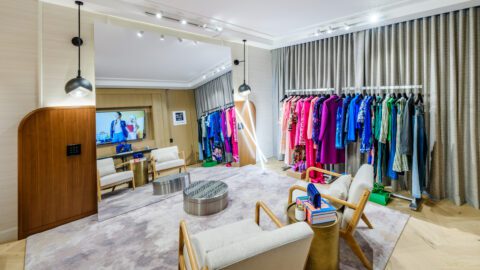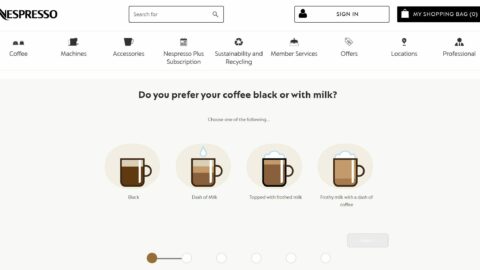With the metaverse ever-present in the media these days, most people’s first thought when hearing the term “3D” will be of things like avatars and virtual environments. But the fact is, 3D design and modeling is having a big impact on business in the real world as well, revolutionizing the way products are developed, tested and sold.
John Burch and Charlie Hall of Wolverine Worldwide’s Merrell brand have seen that evolution first-hand. Over the course of the last eight years the Merrell team has shifted from what Burch called “analog shoemaking” to digital-based product development, and the results have been nothing short of impressive in terms of both speed to market and cost-savings. Active footwear brand Merrell is one of 14 owned by Wolverine Worldwide, part of a roster that also includes brands like Keds, Saucony, Stride Rite and Hush Puppies.
Burch, who is Senior VP of Global Footwear at Wolverine Worldwide, and Hall, Senior Business Analyst at the company, shared their digital transformation journey alongside Ashley Crowder, CEO of the 3D commerce platform VNTANA, in a session at the Retail Innovation Conference and Expo earlier this year.
3D has Come a Long Way in the Last 3 Years
“Not that long ago you would go to a website and see something in 3D and it was clunky and kind of animated [looking],” said Burch at the event. “Now just two, three years later I get unsure if I should even purchase it if it isn’t in 3D. I just find it so much easier to purchase things as a consumer, and that’s our goal — to actually make things easier for the consumer to be connected with the brand and to facilitate that transaction.”
Advertisement
But that wasn’t why the Merrell team originally began moving to 3D in their design and development processes. According to Burch, the original goal was to “get things to market faster.” Prior to moving to 3D, the shortest possible time from concept to market was 12 to 18 months; now, Burch said that has been reduced by 30% to 35%.
“In footwear, the design teams and developers and factory base were still very analog,” explained Burch. “It is literally taping a ‘last’ (a shoe form), transmitting or translating line art that is in 2D onto a 3D object, creating patterns and then trying to get the prototype right and all of the handwork that goes around that. Then there’s the constant what we call ‘looksee samples,’ which are versions of prototypes that the factories have to endure to get an order eventually.”
Not only did that process take a lot of time, it also required a lot of materials (and generated a lot of waste). “We’re now able to do things faster and better, so we’re saving twice,” said Hall. “It used to be that we had designers and developers over in Asia for months at a time. We don’t have to do that anymore. Now we have these [digital] assets available, and not only do we get them faster, but they’re closer to what the design spec is, and as a result the product is better when we get the first pullover [the first sample of a new design].” Not to mention that digitizing the sample materials that the old process required has resulted in huge cost savings, according to Hall.
Use Cases Beyond Design and Development
The other benefits the company has reaped as a result of moving to 3D — better consumer engagement, cost savings beyond materials and more sustainable business processes, to name just a few — have all been part of a “cascade effect” of the decision to go digital in order to move faster.
That’s because it turns out these 3D assets can also serve other purposes after design and development is finalized — on product detail pages, in marketing campaigns and yes, in the metaverse, among other AR/VR applications.
“Now retailers and different people ask us for these files to market our products, so it’s opened up a whole new avenue for us,” said Burch. “Our digital assets pay for themselves, almost four-fold, sometimes five-fold every year when [the products] come out, especially with things like the metaverse and NFTs and all these new different revenue streams starting [to develop].”
Retailers are seeing the benefit of 3D assets on their side of the equation as well. On average, the addition of 3D imagery on product detail pages doubles conversion rates and increases average cart value (ACV) by 61%, according to VNTANA’s Crowder. “One of our clients, Diesel, actually saw ACV increase 70% with 3D compared to 2D, because it gives consumers such a better understanding of the product,” she shared at RICE. “And we’re also seeing significant reductions in returns, because again, consumers have a better understanding of what that product is. So increasing speed to market, reducing carbon footprint by getting rid of physical samples and using 3D models [that are already created for marketing] saves a ton of cost.”
To hear more about Merrell’s 3D journey, including challenges they faced and how they addressed them, as well as their thoughts on new virtual applications for 3D assets, check out the full RICE session, available on demand here.



















